|
Sunbeam, Talbot, Darracq
After the war, Sunbeam suffered from
financial problems, partly from a slump in the motor industry, and partly from
non-payment of some of the war contract work. As a result the company
amalgamated with Darracq and Talbot in 1920 to form the S.T.D. group (Sunbeam,
Talbot, Darracq) with Coatalen in overall charge of design.
Clement-Talbot Limited was formed in
1903 to import the popular French Clement car into the UK and from 1905 it
started producing UK built cars. Alexandre Darracq began building bicycles in
the late 19th century and in 1900 built his first Darracq car. His
Paris based company became largely UK financed and in 1919 Talbot was taken over
by Darracq. Louis Coatalen became a director and had a seat on the
board. After the amalgamation, production at Wolverhampton continued much
as before and Moorfield works continued to turn-out many fine cars.
In September 1920 Thomas Cureton retired
as Chairman and was succeeded by Mr. James Todd. Sadly Mr. Cureton died in July,
1921.
|
|
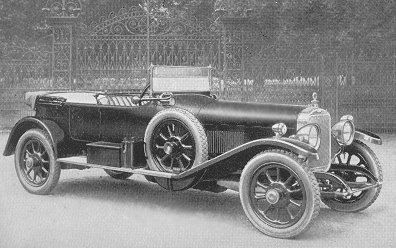
A 24hp. 6 cylinder Light Four-Seater
from 1921. |
Immediately after the war,
when trials and racing again started, Sunbeam
entered teams in all kinds of events.
Tragedy struck
in 1919 when Joseph Christiaens, Head of the
Experimental Department, was killed whilst road
testing one of the company’s racing cars, near to
the works. He was speeding along Upper Villiers
Street when a horse and cart came out of Fowler
Street, causing him to swerve into a wall. |
| Sunbeam mechanic, Frank
Bill, his passenger, was so badly injured
that he needed crutches for the rest of his life. As
a result of his injuries the company gave him a job
as storekeeper.
Sunbeam had continued to race in
America with modest success and Coatalen designed a
new car with a 3 litre, 8 cylinder engine that
included all of the latest racing developments. The
car made its first appearance during the Easter 1921
meeting at Brooklands where it won the 3litre
Scratch Race at 94.64m.p.h. with Henry Segrave at
the wheel.
Coatalen must have been
delighted when the Automobile Club de France staged
its first post-war Grand Prix at Le Mans in July
1921. There were only 19 entrants including 7 from
the S.T.D. group. 3 Talbot Darracqs were built in
France and 2 Sunbeams and 2 Talbots were to be built
in the Experimental Department at Moorfields Works,
along the same lines as Coatalen’s new 3 litre, 8
cylinder car. |
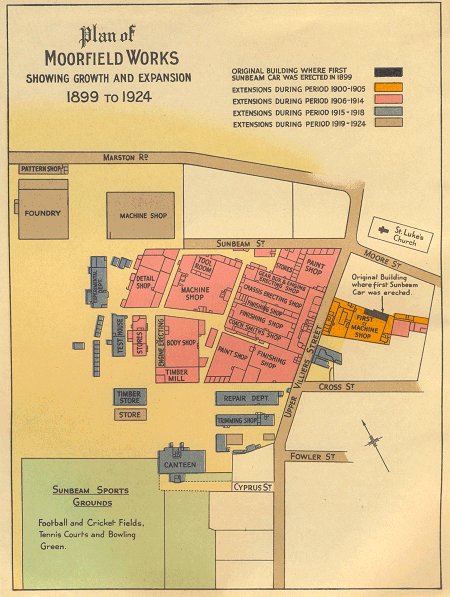

Henry Segrave. From "The
Greatest Motoring Achievement Ever Recorded" pub. by
the Sunbeam Motor Company Ltd. |
While work on the Wolverhampton built
cars was in progress, Coatalen went to a race meeting at Indianapolis, but was
horrified on his return in mid June to find that much of the work still hadn’t
been done.
During his absence there had been a coal strike which had greatly
hindered progress on the four cars, and as there wasn’t enough time to complete
them before the event, he ordered that none of the seven S.T.D. cars should
enter the race, even though they had cost around £50,000 to build.
Henry Segrave and Kenelm Lee Guinness
who would be driving the two Talbots rushed to Wolverhampton from Paris to try
and change Coatalen’s mind.
At the same time André Boillot, one of the Talbot
Darracq drivers, who had already been practicing at Le Mans refused to return
his car to the factory. Under this stiff opposition Coatalen relented and
allowed the two Talbots, and two of the Talbot Darracqs to compete, and after a
week’s hard work Segrave and Guinness got their cars ready for the race.
|
|
Unfortunately both Segrave and
Guinness suffered from tyre problems during the race
and many tyre changes were required. Both cars
performed badly. Segrave had to retime the ignition
on his car when a set-screw came loose on the
distributor and Guinness had to quickly fabricate a
wooden plug when the tap on his petrol filter was
broken off. A loose stone on the road punctured
Segrave’s petrol tank and the hole had to be plugged
with cotton waste. Near the end of the race
Segrave’s car was only firing on six cylinders and
he was lucky to finish at all. In the end Guinness
came in 8th
and Segrave 9th, a disappointing
performance indeed. The two cars were immediately
returned to Wolverhampton and rebuilt. |
| The rebuilt cars would soon
meet with success. When the RAC set a date for the
1922 3litre car race on the Isle of Man, 3 Sunbeams
were entered. They were
driven by Kenelm Lee Guinness, who won the last race
in 1914, Henry Segrave, and Jean Chassagne. |
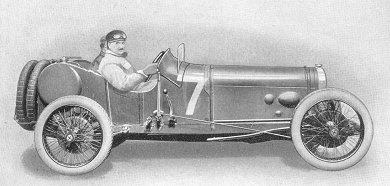
Jean Chassagne's 1922 Isle of
Man T.T. winning car. |
| Unfortunately Guinness failed
to start because of a slipping clutch, and Segrave
was forced to retire when the contact breaker on one
of his magnetos disintegrated. Chassagne’s car
performed perfectly and he went on to win at an
average speed of 55.78m.p.h., a full 4minutes 9
seconds ahead of Clement’s Bentley. Segrave was
awarded the P.J. Evans cup for the fastest lap of
the race. At the end of
1921 Sunbeam introduced the 14hp. model, which would
remain in production in various forms until 1926 and
during that time a total of 1,350 were produced. The
car initially featured a lightweight aluminium
1.945litre engine, which in 1923 was increased in
size to 2.12litres by slightly increasing the bore.
The car then became the 14/40hp. Finally in 1926 a
16hp. engine was fitted and the car became the
14/60hp. but only six were produced. |
|
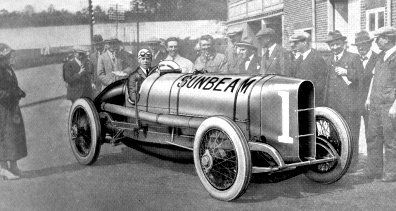
Kenelm Lee
Guinness and the 350hp. ‘V12’ aero engined car. |
Another of Sunbeam’s notable
sporting achievements took place on 17th
May, 1922 at Brooklands when Kenelm Lee Guinness
broke the world land speed record at 133.75m.p.h. in
an 18 litre, 350hp. ‘V12’ aero engined car.
This was Sunbeam’s first entry
into this field and many more successes would
follow. |
| New 2 litre, 4 cylinder cars
were also built in readiness for the 1922 French
Grand Prix at Strasbourg in July. The Sunbeam team
consisted of Henry Segrave, Jean Chassagne and
Kenelm Lee Guinness.
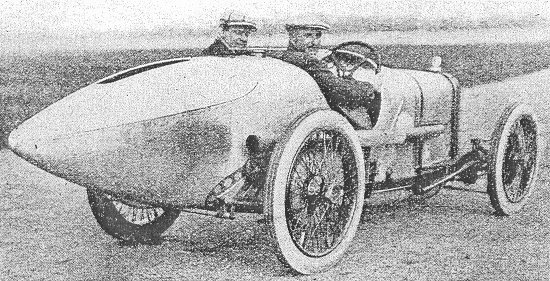
An early view of one of the 2
litre cars. From The Motor, 17th May, 1922.
The race covered 499 miles and
consisted of 60 laps of the circuit. Unfortunately
the new cars did not meet with much success. Segrave
retired after 30 laps whilst in 3rd place
and Guinness and Chassagne both retired in lap 5
with broken inlet valve stems. One of the cars
however performed extremely well at the Brooklands
Speed Championship Meeting that was held on
September 30th. With Segrave at the
wheel, it finished in first place in the 2 Litre
Class Race, over a distance of 8.5 miles, at an
average speed of 92.38m.p.h. Its fastest lap was at
99.81m.p.h. |
| One of Sunbeam’s
greatest sporting achievements was in the 1923
French Grand Prix at Tours on 2nd July.
The Sunbeam team consisted of Henry Segrave, Albert
Divo, and Kenelm Lee Guinness. The 497 mile race was
an amazing triumph for the British cars.
Segrave
came in first, at an average speed of 75.3m.p.h.
Divo came in second and Guinness finished in fourth
place. |

Henry Segrave at the wheel of
his 1923 French G.P. car. |
|
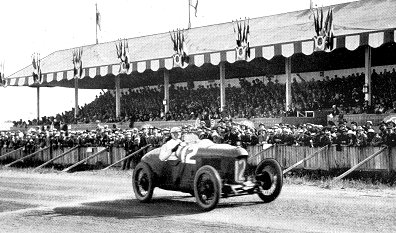
Henry Segrave in action in the
1923 French Grand Prix. |
This was the first win for a
British car in the Grand Prix.
In October, Divo went on to
win the Spanish Grand Prix at the Autodrome
Nacional, Sitges in a time of 2hrs 33min 56s. for
the 248.5mile course.
His Sunbeam team mate Dario Resta was forced to retire after 150 laps. |
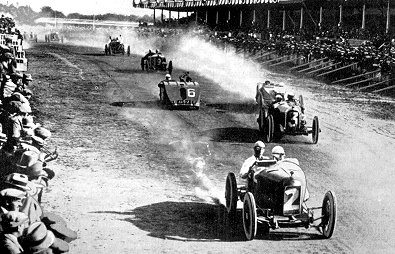
A final view of the 1923 French Grand
Prix.
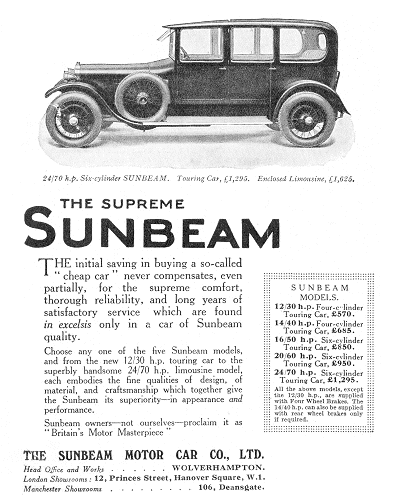
An advert from 1924.
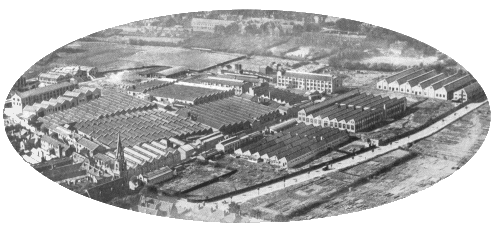
Moorfield Works in 1924.
|
The foundry
in 1924. |
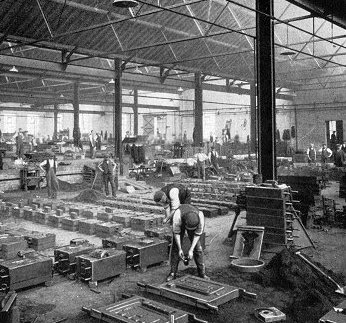 |
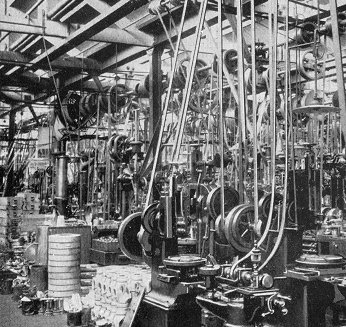 |
The Machine Shop in 1924. |
|
The Chassis
Erecting Shop in 1924. |
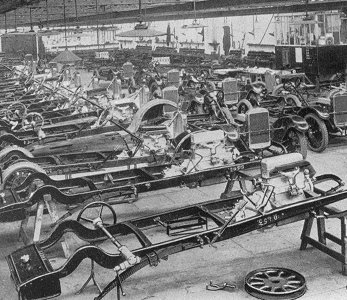 |
| |
|
|
 |
|
 |
|
Read an article about the
works in 1924 |
|
Read a
later article about the works |
| |
|
|
| From the early 1920s onwards, Sunbeam
cylinder blocks were made by Court Works Limited
at Madeley in Shropshire. The factory had been
purchased by Thomas Parker and his son Charles
in 1910. The factory specialised in the
production of high quality castings. In 1925
Charles Parker sold the factory to Rootes
Brothers, who were Sunbeam's London agents. By
1933 Court Works Limited was a wholly-owned
subsidiary of S. T. D. Motors. |
|
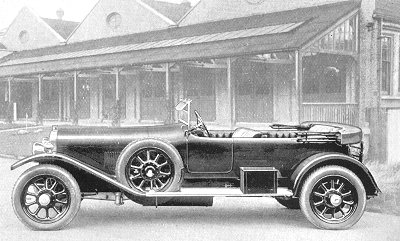
A Sunbeam 24/60hp. car from
1923. |
1925 saw the introduction of
the 20/60hp. with a 3.18litre, 6 cylinder engine.
The high quality car proved to be successful for the
company as 1,560 were built in various forms.
Prices varied from £950 for
the 5-seater Tourer to £1,275 for the Landaulette.
The car remained in production until 1927. |
|

A 20/60hp. Limousine from the
1925 Sunbeam catalogue. It was priced at £1,250. |
|

A 14/40hp. Sports Model from
the 1925 Sunbeam catalogue. It was priced at £750. |
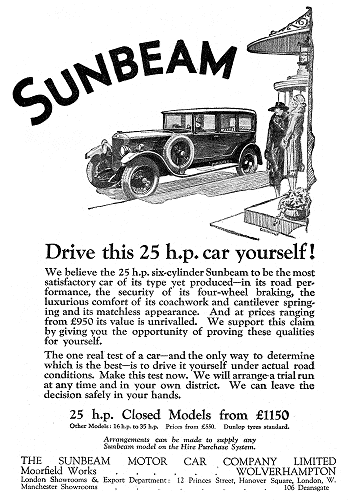
An advert from 1926.
 |
|
 |
|
 |
Return to
After The War |
|
Return to
the beginning |
|
Proceed to
Racing
Tragedy and Success |
|